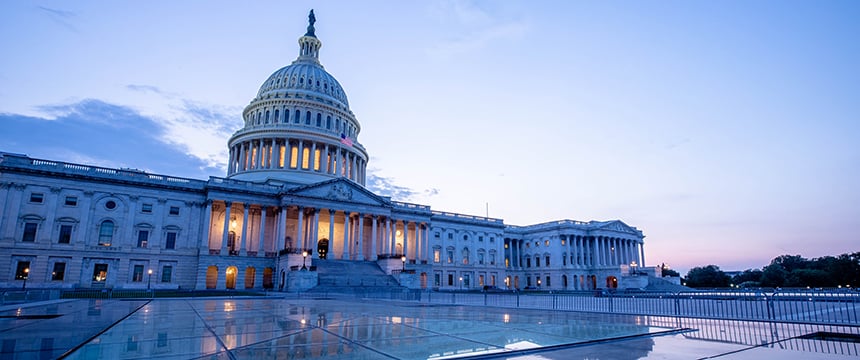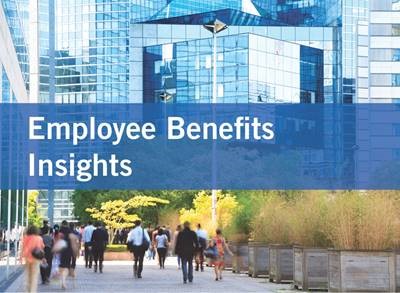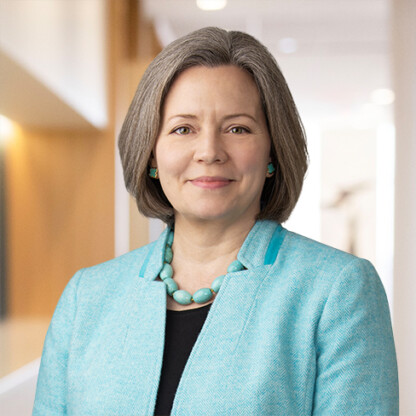
The year-end budget and COVID relief package signed into law on December 27, 2020 (the “Budget Bill”) includes several changes affecting retirement plans. Most of the changes are temporary in nature, but one change affecting defined benefit pension plans is permanent.
Temporary Changes
Avoiding Partial Plan Terminations
As explained in our prior newsletter, current tax rules provide that qualified retirement plans (such as 401(k) or pension plans) experience a partial plan termination if there is a significant reduction in the number of active plan participants during a 12-month period (typically, an employer-initiated termination of at least 20% of the plan’s active participants during a single plan year). When a partial plan termination occurs, the plan must fully vest any plan participant who voluntarily or involuntarily terminated employment during that 12-month period.
The Budget Bill grants temporary relief from applying the partial plan termination rules for the 2020 and 2021 plan years to a qualified or 403(b) retirement plan if the plan’s active participant count on March 31, 2021 is at least 80% of the plan’s active participant count on March 13, 2020.
As a result of this relief, companies that have reduced their employee headcount since March 13, 2020 should hold off until March 31, 2021 before making a determination of whether their retirement plan experienced a partial plan termination for the 2020 plan year.
Extending COVID-19 Distribution Provisions to Money Purchase Pension Plans
As explained in our prior newsletter, the CARES Act allowed 401(k) and 403(b) plans to provide plan participants with temporary access in 2020 to their retirement plan funds via expanded in-service distribution rights for certain individuals affected by the COVID-19 pandemic.
The Budget Bill expands those in-service distribution rights to money purchase pension plans, retroactively effective as if money purchase pension plans were originally included in the CARES Act.
As provided under the CARES Act, plan sponsors wishing to implement these rules for their money purchase pension plans will need to amend their plans no later than the end of the plan year beginning in 2022.
Non-COVID-19 Qualified Disaster Distributions and Loans
The Budget Bill applies rules similar to the expanded distribution and loan provisions of the CARES Act to “qualified disaster” participants who participate in 401(k) and 403(b) retirement plans.
A “qualified disaster” means a disaster declared by the President during 2020 or through February 25, 2021 (60 days after the Budget Bill was enacted), other than a disaster solely due to the COVID-19 pandemic. A qualified disaster participant is a plan participant whose principal residence is in the qualified disaster area, and who has sustained an economic loss by reason of the qualified disaster. A qualified disaster participant can take advantage of the following rules:
- Until June 24, 2021 (which is the end of the 180-day period after the enactment of the Budget Bill), a qualified disaster participant may take a distribution of up to $100,000 (reduced by the amount of any prior qualified disaster distributions made in any prior years on their behalf), even if a distribution would not otherwise be available under the plan. The dollar limit is determined across all plans maintained in the controlled group of companies that includes the plan sponsor.
This distribution is not subject to the 10% additional tax under Internal Revenue Code section 72(t), and is generally included in income over a 3-year period, rather than being taxed all at once. The participant is permitted to repay some or all of the distribution during the 3 years following the distribution to any plan to which the participant could elect a rollover.
- Until June 24, 2021, a qualified disaster participant may take a loan of up to the lesser of $100,000 or 100% of the participant’s account balance. In addition, a qualified disaster participant may suspend for up to 1 year (or, if later, until June 24, 2021) any loan payments due during the period starting on the date of the qualified disaster and ending 180 days after the end of the qualified disaster, and the 5-year term of the loan may be delayed to take into account such repayment suspension period.
In addition, participants who took a “qualified distribution” from a retirement plan to purchase or construct a principal residence in a qualified disaster area, but who did not use the money for such purpose on account of the qualified disaster, may repay some or all of that distribution to any plan to which the participant could elect a rollover until June 24, 2021. A “qualified distribution” is an amount received during the period beginning 180 days before the first day of the qualified disaster period and ending 30 days after the last day of such period.
All of these changes are optional. A plan sponsor desiring to implement one or more of these changes may begin to administer them immediately, but must amend their plan no later than the end of the plan year beginning in 2022 (or for governmental plans, the plan year beginning in 2024), unless the Internal Revenue Service provides for a later deadline in future guidance.
Permanent Change
Reduced Age for Pension Plan In-Service Distributions
Defined benefit pension plans are now permitted to provide in-service distributions for plan participants who are age 59½ or older. Previously, in-service distributions from pension plans were generally only permitted beginning at age 62. This change is immediately effective.
This change now aligns in-service distributions for pension plans with those applicable to 401(k) and 403(b) plans. This change is optional, but could assist employers in retaining older workers who might otherwise terminate employment to access their pension benefits. In addition, it may aid employers who have added lump sum distributions to their pension plans as a way of reducing their PBCG premium obligation by allowing active participants to take their entire pension benefit in a lump sum, even while still working.
Because this is an optional change, and there is no special amendment deadline included in the Budget Bill, a plan sponsor desiring to implement this change will need to amend their pension plan by the end of the plan year in which the change takes effect.
 |
As part of Foley’s ongoing commitment to provide legal insight to our clients and colleagues, our Employee Benefits and Executive Compensation Group has a monthly newsletter we call “Employee Benefits Insights,” where we provide you with updates on the most recent and pressing matters concerning employee benefits and other related topics. Click here or click the button to the left to subscribe. |


